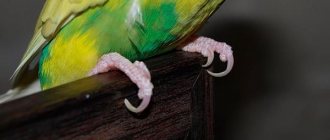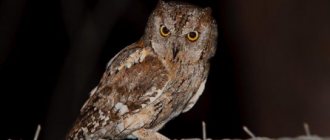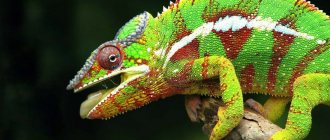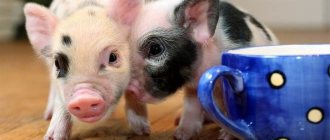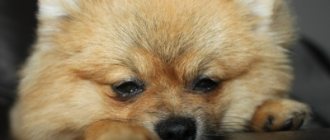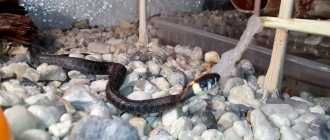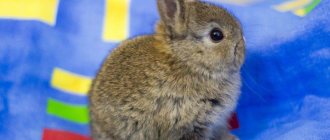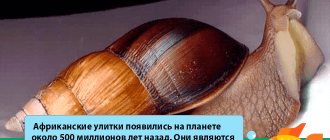Proper care of your parrot will cause your pet to be in a joyful, mischievous mood. Since life in captivity shortens the life of a bird by half. Restricted movements, an unkempt cage, monotony, lack of communication, negatively affect the character and health of individuals. For the care and love provided, the pet will reward you with a ringing squeak, and maybe with a spectacular, colorful dance with bows. This instructional article will tell you how to properly care for parrots at home.
Color, appearance
A distinctive feature of these pets is their bright, variegated coloring with a predominance of green, but there are also monochromatic types of parrots. Many species have long crests and tails. The eyes of birds are relatively large and protected by the lower eyelid.
Their beak is also special - large, bent, sharp. The parrot's thick and short legs have four fingers with claws, two of which are turned back, which allows the bird to bring food to its beak. Some species of these birds can reach up to 1 meter in length, and the smallest are only 10 cm.
The conclusions are as follows
You cannot keep a budgie:
- In the kitchen. There are always drafts, odors, harmful Teflon dishes and open fire.
- Near operating equipment: audio, video, TV, etc. Sharp and sudden loud sounds destroy the pet's nervous system.
- In the sun, whose direct rays are necessary, but you also need shade, where you can hide at any moment.
- The worst place is the window, where all the harmful effects are concentrated: drafts, heat, cold, unexpected flashes of light from car headlights, noise.
The best options for placing bird housing:
- Near the wall: press the back surface of the cage against the wall. This creates a place where the budgie feels safe. You can even hang it in the corner and thereby cover two sides of the house with walls. The bird will control the space even more confidently.
- On a human level. Communication requires convenience: if the cage is on the floor or suspended from the ceiling, communication will be reduced to zero. It is better that the budgerigar’s favorite roosting perch is at eye level with the household.
- In the common room: living room, dining room.
Conclusions on placing a cage with a parrot
Purchasing and arranging a cage
A little funny guy should be able to flutter and move freely in his own home. The more spacious it is, the better. The size 30x40x40 is barely enough for a single person. The material from which the cage is made can be any, but it is better to choose stainless steel. A proper home for a budgerigar should have thin, always horizontal rods, a flat bottom, and a retractable tray.
You can equip your home with two or three perches made from fruit trees. There is no need to paint them or remove the bark. Feeders are sold complete with the cage. There should be at least two of them: for dry food and wet food. Mineral supplements also need a separate container. You also need to purchase a drinking bowl, preferably an automatic one, and a bathing container. Recommended toys include bells, bells, swings, and a mirror, which wavy animals love very much. Igor Ignatenkov
Stocking up on food
To recover from debilitating molting, a special diet is required. To maintain good health, a parrot requires a balanced diet. The basis is:
- grain solid food - a mixture of various grains;
- soft supplements - protein foods, vegetables, fruits.
What to feed your parrot
You can mix the grain yourself:
- black, white, red, yellow millet – seventy;
- hemp, wheat, canary, flaxseed - twenty,
- oats - ten percent.
You can also buy a ready-made mixture. In addition, carbohydrates, proteins, minerals, and vitamins are needed, without which the body cannot function normally.
What can you give a parrot?
- Vegetables: beets, zucchini, cucumber, carrots, cauliflower, Brussels sprouts, broccoli and kohlrabi.
- Fruits: peaches, apples, pears, apricots (all pitted).
- Seasonal berries: strawberries, raspberries.
- Calcium and protein: hard-boiled egg.
- Zero fat cottage cheese.
- Herbs and wood: fresh leaves of dandelion, clover, plantain, young branches of rowan, linden, birch.
What should you give your parrot?
What's not allowed?
Store-bought expired cereal mixtures, human food (with salt, fried or fatty), bread, especially yeast bread, sweets. Breeders have different opinions regarding nuts. Some consider them too fatty and unhealthy, others recommend walnuts or peanuts. You probably just don't need to feed them often. Potatoes, eggplants, garlic, onions, radishes, avocados, mangoes, and persimmons are prohibited. Under no circumstances should you give branches of poisonous trees: poplar, acacia, lilac, oak.
Read also
The parrot crows and hides its head
Additional accessories
You will need swings, ladders, and a variety of toys. However, there is no need to overload the cage; space is more important for the wavy. Wickers and additional poles can be placed on the walls in the room.
Types of parrots
At home, it is recommended to breed both small species of parrots - budgies, lovebirds, as well as medium-sized ones - cockatiels and large ones - grays, macaws, cockatoos, Amazons.
Budgerigar
The budgerigar is the most famous species of pet parrot. You can keep one parrot, two different-sex parrots, or several birds at once in a cage. The natural color of budgies is grassy green. Through domestication, the color of parrots characteristically diversified into bright and light colors.
The color of the cere tells about the sexual characteristics of the pet. In the older male it looks bright blue, in the young one – purple; in a mature female it is brown, in a young female it is blue.
The beak of this parrot is strong, dark in color in chicks, and pale yellow with a green tint in mature birds. These birds belong to the talking parrots and do not make unnecessary noise.
Keeping budgies does not pose any difficulties. You just need to do the following every day:
- monitor the food in the feeders;
- change water;
- clean the cage;
- let fly;
- provide fruits, vegetables, herbs;
- Give him a bath once a week;
- love your pet.
Toilet training
Several dozen toilet-finding exercises will make life easier for the parrot and its owners. Owners can teach their pet to defecate in the same place in the cage, which will make cleaning the home easier.
One person should train the pet.
- You need to come up with a short phrase that will guide the bird's mind while searching for a toilet. For example, "Dli"!
- If the first “symptoms” of the desire to go to the toilet are observed (behavior changes: moving backwards, lifting, moving the tail, etc.), it is recommended to take the bird and hold it over the tray (which should be in one place).
- When you bring your pet over the latrine, you need to say exclamation: “Long!”
Carry out training as often as possible until you get a positive result. The parrot will get used to the place and will independently go to the designated container.
If the result is negative, the bird cannot be punished or scolded, but it is better to potty train it within 4 months.
Characteristics and features of parrots
A characteristic feature of parrots is their bright colors, long crests and tails. The movable strong beak of a parrot serves not only for eating, but also for defense and movement along tree branches. The singing of parrots has individual characteristics and also depends on the character and mood of the pet.
By nature, parrots are quite friendly, sometimes they show themselves in a very funny and funny way, surprising others. These birds require proper care and treatment; they cannot tolerate loneliness and begin to show whims. Pet parrots can be noisy and create chaos in their cage.
History of domestication
The ancient Egyptians knew nothing about parrots, and there is also no mention of these birds in the Bible. Parrots were brought to Europe from India during the time of Alexander the Great. In India, parrots were considered sacred and were looked after by priests. In Greece, these parrots were called Alexandrian parrots. Talking parrots gained enormous popularity in Ancient Rome. A bird was worth more than a slave; teachers were hired for it and the word “Caesar” was always taught. Later, African species of parrots appeared in Europe.
After the discovery of South America, they not only found a huge number of beautiful species of large parrots, but also saw among the local residents completely tamed talking birds, which could even serve as guard dogs. In addition, the Indians received beautiful feathers from their pets. The first South American parrots were introduced into Europe in 1492. These were macaws.
Parrot nutrition
It is necessary to provide pet parrots with a complete and varied diet. Various grain mixtures make up 60% of your pet's food. Parrot food depends on the size of the parrot and living conditions in nature; brands such as Padovan, Versele-Laga, Fiory, RIO are recommended.
It is also advisable to give raw and boiled fruits, vegetables, berries, fresh herbs, sprouted wheat and oats, branches of fruit trees, various cereals and mineral supplements.
Be sure to have fresh water in the cage. Several times a month you can give a drink with lemon juice (1-2 drops), a decoction of chamomile or rosehip. The parrot's menu can be adjusted taking into account the bird's age, condition, and season.
The most important thing is to choose a pet
Deciding on gender
With a boy, the learning process goes faster. As a result of long and systematic training, males can remember more than six hundred words. When the little one grows up, gets used to it, and gains certain knowledge, a mate is selected for him.
The female will willingly communicate with the native inhabitant of the cage, thus adopting his human speech skills.
You need to decide the gender of your parrot
Breeders claim that girls are no less smart, and therefore do not see the difference who appears in the apartment first.
However, we must not forget about the matriarchy that exists in the world of birds. The visiting male will have a hard time, but he will never offend his girlfriend.
The importance of a parrot's age
You need to buy a young individual, before the first molt. Then acclimatization and adaptation will be faster, and the pet will become firmly attached to the person. Young people frolic, are more curious, they are interested in everything new. It is especially useful to entrust the chick to children over ten years of age, this way they develop a sense of responsibility for our younger brothers.
One or more
If you place more than two budgies together, they will only communicate with each other. Why do they need people if they have relatives? Watching a flock of charming chirpers is, of course, fun and often touching, but it is impossible to teach them anything.
How many parrots is it advisable to take?
Which parrots should you choose?
We need a full-breasted, well-fed, active, and mobile specimen. With clean and even feathers, clear wavy lines on the back, a short tail, black eyes without gray edging, symmetrically located paws, purple or blue wax, which must be clean and completely dry.
What signs should you be wary of?
It would be right to abandon the lethargic, disheveled bird with a dull gaze from under half-open eyelids. She is unwell.
If it is red or dirty, you should also refrain from purchasing: most likely, the wavy has a problem with the digestive tract and poor metabolism.
A protruding sternum is a sign of exhaustion, and this, in turn, is always a consequence of a serious illness.
What signs should you pay attention to?
Rarely in budgies, a nasty disease called French molt occurs. This is when the great bird does not have all its flight feathers. In this case, it is better to look for another one. With such an illness, the tail feathers and flight feathers on the wings will never recover.
Maintenance and care
Keeping parrots at home does not involve any particular difficulty. The very first purchase for a pet should be a spacious cage - all-metal and simple, rectangular in shape, 5 times the size of the bird, with a good lock.
The cage must be placed in a bright, wind-free room, and it is advisable to cover it with a blanket at night. Maintaining silence will allow the bird to feel comfortable.
The parrot's cage is equipped with the necessary items and toys - rings, swings, bells, perches - for activity, mirrors - for the desire to talk. Daily cleaning is part of caring for your pet. This includes washing the tray, feeder and drinking bowl, and replacing the bedding.
The parrot must be let out of the cage to fly. Communication is an important part of caring for your pet. When a bird gets bored, it begins to pluck out its feathers and becomes sad, for this reason it is necessary to devote half an hour to it twice a day.
For the reproduction of parrots and the appearance of chicks, it is necessary:
- choose the right pair of parrots;
- age of individuals from 12 months;
- the presence of a nest or house - each pair has its own nest;
- proper fortified diet;
- temperature 22 degrees, humidity 60%.
Egg laying and incubation period is approximately 1-2 months.
Walks in the open air
It is good to take the cage with the birds outside in the summer. Caring for a budgie indoors alternates with walks in the fresh air. It is good to purchase a special harness for walking your feathered pet outside. You can find such a leash for parrots in specialized stores. The harness is worn on birds that trust their owner and have been living in the house for several days.
Benefits for birds from walking in the fresh air:
- health promotion;
- exploration of new territories;
- production of vitamin D from ultraviolet radiation.
On a note! The pet should not be constantly exposed to direct sunlight. He could die from this. The cage must be shaded.
In the evening, the bird house is wrapped in a blanket, leaving one wall free. This way the pet will not freeze and there will be a free flow of air.
How to teach a parrot to talk?
Gray gray parrots speak best, they speak clearly, can answer questions, say good morning or evening. Budgerigars are very gifted. Cockatiels can speak a few words and imitate a phone ringtone. Sometimes macaws and Amazons speak well. This property is individual and depends on the perseverance of the teaching person and the talent of the bird.
It is easiest to teach a young male to speak; they perceive women's and children's voices very well. You need to repeat a phrase every day and treat the bird with a treat. Sometimes it is recommended to cover the cage with thick fabric for a lesson. You can put on a sound recording. To learn to talk, a bird must live alone so that it wants to communicate with a person. Sometimes parrots themselves learn to imitate the barking of a dog, the meowing of a cat, the chirping of birds, the ringtone of a telephone or a car alarm.

